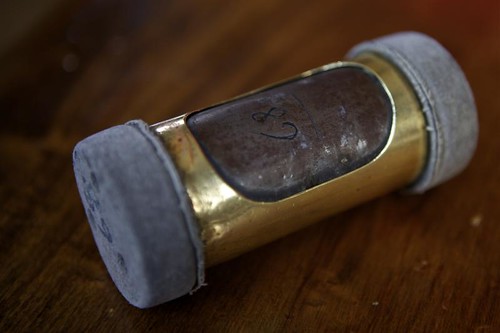How do you follow a capsule in the pneumatic tube system, during its travels around a hospital in one day?
Two of my favourite academics, Annemarie Mol and Jessica Mesman, talks about the limits of following actors, in reference to actor-network theory and a hospital ethnography:
In a previous post I referred to a German video where a camera had been sent on an explosive journey through a pneumatic tube system. Perhaps another method may be to attach a GPS tracker to a capsule? Take for example artist Jeremy Wood's 'Traverse me: Warwick campus map for pedestrians'. The intricate GPS drawing is a personalised tour of the university's campus, compiled over 17 days of walking with a GPS device. The map has also been superimposed over photographs of some of the locations Jeremy Wood visited on his travels. Is this one way to draw a day in the life of a pneumatic tube capsule?
Image 89 or is that 68?, originally uploaded by pathlost on Flikr.
Two of my favourite academics, Annemarie Mol and Jessica Mesman, talks about the limits of following actors, in reference to actor-network theory and a hospital ethnography:
J had read that she should follow the actor. But after following the medium care neonatologist around for a day, J came home exhausted because the man walked so fast. And what about the pieces of paper that travel from ward to the dispensary? J couldn’t enter the hospital’s postal system with them, for its plastic tubes were big enough for forms, but far too small for human bodies (Mol and Mesman 1996, p422 – 423)I have been thinking about the challenge of literally following a capsule. There have to be other ways of mapping the life of a capsule as it traverses a hospital system, that do not involve being shrunk to the size of a pathology sample Innerspace style.
In a previous post I referred to a German video where a camera had been sent on an explosive journey through a pneumatic tube system. Perhaps another method may be to attach a GPS tracker to a capsule? Take for example artist Jeremy Wood's 'Traverse me: Warwick campus map for pedestrians'. The intricate GPS drawing is a personalised tour of the university's campus, compiled over 17 days of walking with a GPS device. The map has also been superimposed over photographs of some of the locations Jeremy Wood visited on his travels. Is this one way to draw a day in the life of a pneumatic tube capsule?
Image 89 or is that 68?, originally uploaded by pathlost on Flikr.


No comments:
Post a Comment